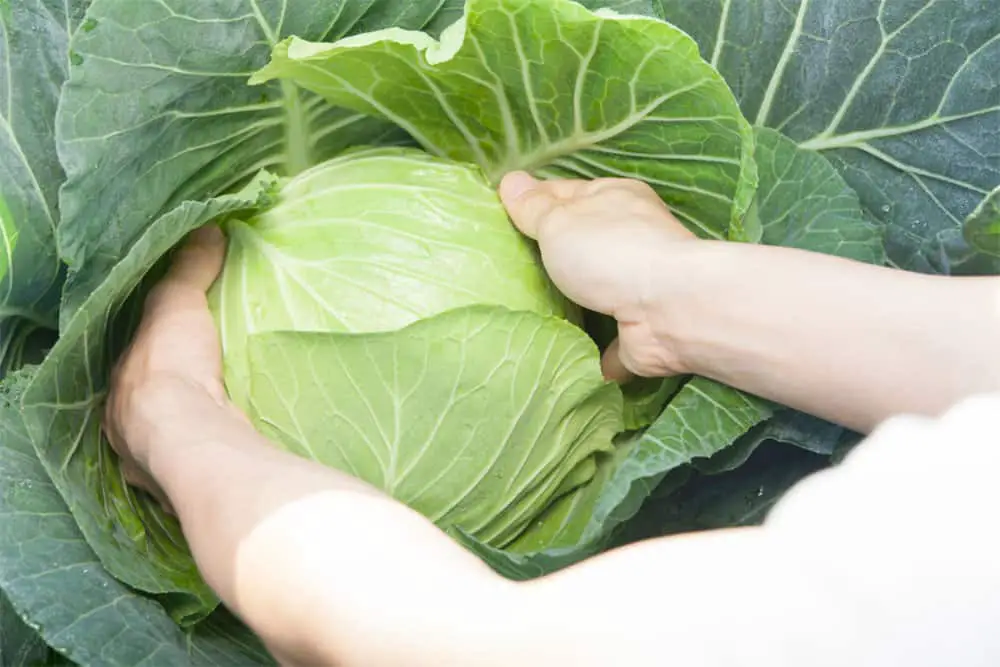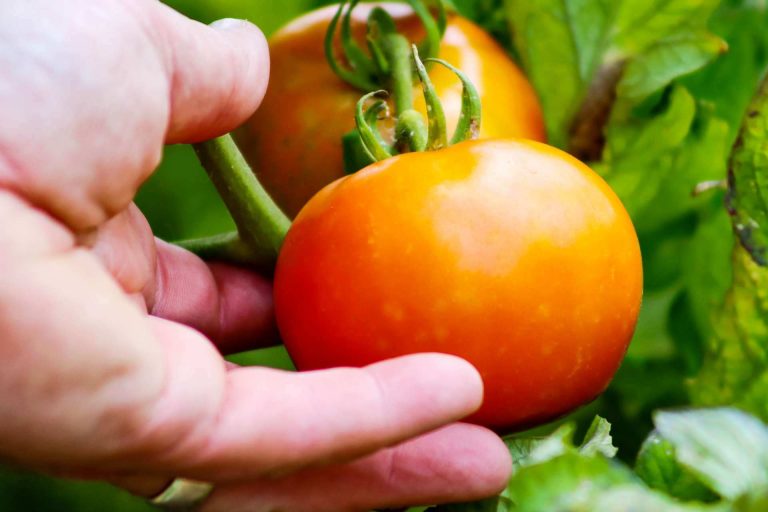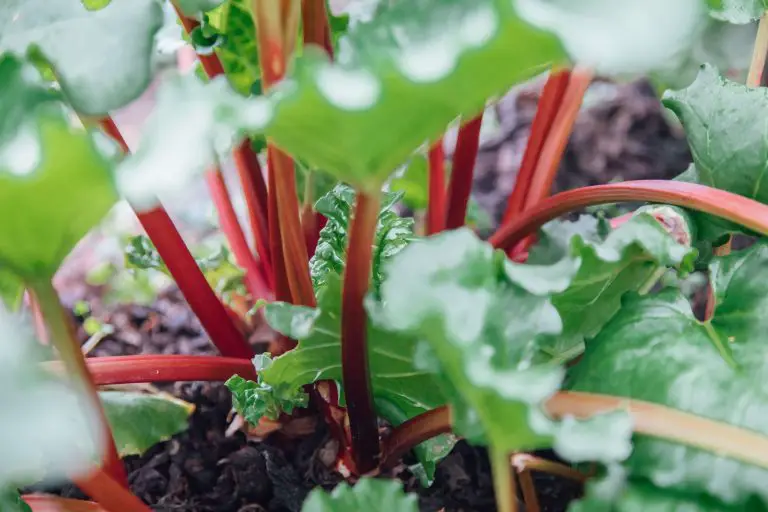How To Harvest Cabbage-The RIGHT Way!
When To Harvest Cabbage?
Are you wondering, How To Harvest Cabbage? Here is a quick and easy guide to harvesting cabbage so you can do it the RIGHT way!
Harvesting cabbage is possible at any size, but only after the head has become firm and if it hasn’t already split. You should ensure that you leave approximately four wrapper leaves around the head of the cabbage to prevent it from drying out.
Ideally, cabbage should be harvested when the head is approximately 5 inches (12 cm) or more, you should also lightly squeeze it in order to test whether it is firm enough or not. It can also be harvested when it is 9-12 inches tall but this is applicable to elongated Chinese cabbage.
In contrast, leafy cabbage can be harvested around a month after planting if you are utilizing the leaf-by-lead method where you are able to cut and then cut again. That is why it is important to know what specific cabbage you are growing in order to understand the best method of harvesting it.
Harvest your ripened cabbages with a quality cutting knife for a quick clean cut for quicker harvests!

There are numerous types of cabbage and what works for one crop will not necessarily work for another. For instance, some varieties can be grown for weeks after they are firm whilst others should be harvested immediately.
Related Articles:
- Best Seed Starting Kit Of 2022
- When To Pick Cauliflower (The RIGHT Way To Harvest Them!)
- How To Harvest Romaine Lettuce [2022 Update]
- What Do Plants Need To Grow And Survive? [2022 Guide!]
- How To Prevent Weeds In Flower Beds?
DISCLAIMER
Some of the links on here are affiliate links and I may earn if you click on them, AT NO EXTRA cost to you. Hope you find the information here useful! Thanks.

It is also important to note that cabbages grow better in cooler temperatures between 55°-75°F. Spring cabbages will therefore mature in 50 to 60 days whilst midseason varieties that are planted in early spring will take anywhere from 85 to 200 days to reach the appropriate conditions for harvesting.
With this in mind, in many cold winter regions, cabbage is a spring and fall crop. In warm-winter regions, cabbage would be a winter crop. Cabbage heads will be able to withstand freezing temperatures (down to -6°C).
However, if there is a concerning, severe freeze predicted, you should protect your cabbage during this period by either pulling it from the crop bed or protecting it under a layer of an appropriate material, like straw.
Cabbage for fall harvesting will usually only form one head on each individual plant, so you should set aside any larger or firmer cabbage heads for winter storage. Other cabbages should be utilized within a month of harvesting. Cabbage for spring or summer harvesting may produce multiple heads.
Cabbages love good fertile high nitrogen soil, add organic compost when preparing beds before transplanting!

Cabbage that is planted in springtime should be harvested when the heads are smaller (no larger than a tennis ball).
When you first cut the heads of these cabbages, you should cut as close to the head as is possible as you will need to leave the stem and approximately five of the plant’s low-hanging leaves. From each of these leaves, a new loose-head will be able to grow.
These miniature cabbages will stay fresh for several weeks if kept under cool conditions upon harvesting.
Note– If you want to make your green fingers happier and your life easier, you can use this affordable 83 pieces ultimate gardening set to help you garden like a pro!
How To Harvest Cabbage?
You should cut headed cabbage from the very base of the stem, using a sharp knife. Only cut your cabbage when it feels as though it is firm and therefore ready to be harvested. If the head feels at all loose, then you should allow it to mature for a longer period of time.
Allow yourself to leave the stem and the lower leaves behind to formulate smaller cabbage heads (as outlined above). You are also able to harvest cabbage by pulling it up from the roots if you do not wish to leave the stem behind for a second harvest.
If a cabbage head begins to corrode or crack before it is firm and ready for harvest, twist the head at 180° at ground level. This twisting motion will break off some of the unnecessary roots and help to slow down the growth of the head.
Be careful not to uproot your cabbage completely. To further slow the growth of your cabbage, give the plant another 90° twist. This process will delay the harvesting of any cabbage heads that are unnecessary, immediately.
Use a seed germination kit for a greater chance of seed germination with healthy and better seedlings!

Top Tips
You will be able to ‘get ahead of the next season by replanting any roots and stalks that you have dug up during the harvesting process. Make sure that you store them in a trench or have kept them in a cold garage over the winter period.
Re-plant them as soon as the soil is in the right conditions for workability. This will ensure that you are able to produce early greens during the next harvest season.
You should also research as much as possible about your specific variety of cabbage as there will no doubt be a variety of gardening expertise that you can implement in order to tailor your cabbage growth to your specified requirements.
For example, if you want to produce three cabbage heads but are only currently producing two, there are numerous sources of cabbage-based information that will enable you to use the most accurate process to ensure that your patch is growing at a healthy and manageable pace.
To conclude, you should harvest your cabbages when they have reached the specified size that is relevant to their individual type. You should also ensure that they are firm and that the heads on the stem have not split prematurely.
The process of maturity will take approximately around 70 days depending on when you are planting the crop.
This is applicable for most green cabbage types. You should also ensure that you cut the cabbage head at the base using the sharpest knife that is available as this will avoid unnecessary damage to your crop.
Maintaining is key so be sure to remove any yellowing leaves and retain your stems for further harvesting. You should also ensure that you are only saving or composting healthy plants and destroying those that may have a maggot infestation.
This way you will ensure that your soil and any future cabbage patches are kept in a healthy condition in order to produce the highest quality cabbage.
Use insect netting to stop worms and caterpillars from damaging your cabbage plants. It’s a fast, eco-friendly and efficient solution when dealing with pests!

Cabbage makes a delicious addition to a wide variety of recipes and in a climate where growing your own food is of increasing importance, you should be sure to harvest your cabbages with accuracy and attentiveness, enjoying the process of natural harvesting.


![How To Harvest Cilantro Without Killing The Plant?[The Best Way!]](https://aboveandbeyondgardening.com/wp-content/uploads/2022/10/how-to-harvest-cilantro-without-killing-the-plant-6-768x512.jpg)
![Using Neem Oil For Tomatoes: The Ultimate Guide [2023]](https://aboveandbeyondgardening.com/wp-content/uploads/2022/10/neem-oil-for-tomatoes-1-768x512.jpg)



![How To Harvest Oregano Without Killing The Plant? [Personal Experience!]](https://aboveandbeyondgardening.com/wp-content/uploads/2022/10/How-To-Harvest-Oregano-Without-Killing-The-Plant-7-768x442.jpg)